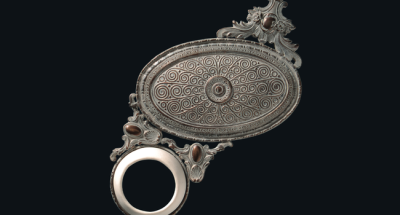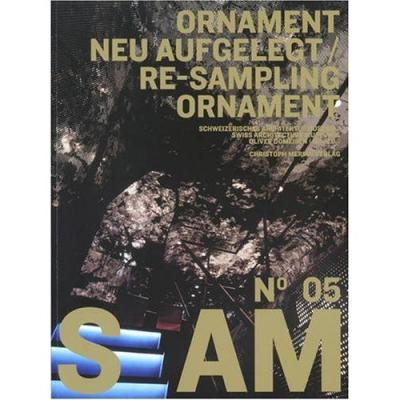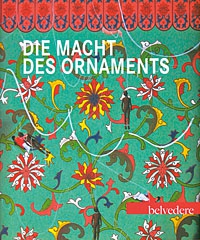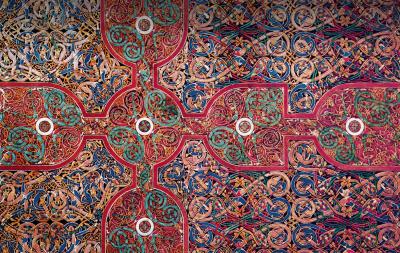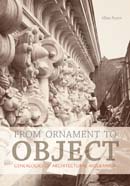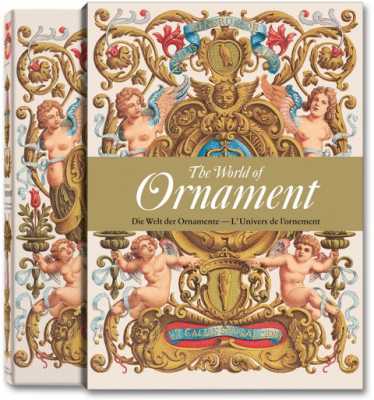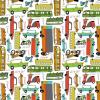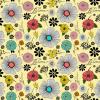 http://isites.harvard.edu/icb/icb.do?keyword=k83922&tabgroupid=icb.tabgroup136410
About the Conference
http://isites.harvard.edu/icb/icb.do?keyword=k83922&tabgroupid=icb.tabgroup136410
About the Conference
Interest in ornament has grown by leaps and bounds in the last ten years or so—among artists, architects, theorists, critics and historians, among literary figures and musicians. This interest—both among scholars and among artists—is not entirely new, as at various times in history ornament has attracted intense attention. Indeed, the story of ornament has followed what amounts to a sinus curve of highs and lows—never interrupted or broken, even if from being identified as the critical signifier of identity in a culture, ornament was also demonized in the 20th century as an all too facile link to a past increasingly irrelevant to the present. Various kinds of publications have accompanied this undulating movement throughout history. Some have been thematic, some have been educational, some have been directed at craftsmen others at theoreticians and architects, some were intended for pleasure others for reflection.
The recent rise in interest in ornament has generated publications in many fields and from many perspectives, from literary studies at one end (in which scale /miniature took center stage) to gender studies at the other, which drew attention to women’s art and aesthetic having been unjustly removed from the center of discourse for being “fussy”, too delicate or privileging the minor arts (a pejorative term in and by itself) such as weaving, pottery or embroidery. More centrally, work on the applied arts and the movements associated with them has turned the spotlight once again on figures such as architect/theorist Gottfried Semper, on Islamic art as paradigmatic for an ornament saturated approach, to the arts of métissage between Europe and the Latin American continent, but also to moments and movements in modern art such as the Arts and Crafts, the Bauhaus, or Alois Riegl’s Stilfragen when ornament became significant for opening new ways of thinking. Most symptomatic of a current renewed interest has been the recent work of practicing architects such as Jean Nouvel, Farshid Moussavi and Herzog and De Meuron, who have re-engaged with ornament in their buildings and in their written work. The current rise of ornament assumes that in a multi-cultural and increasingly cosmopolitan global society, symbolic communication is difficult because of the absence of a common visual tradition. Hence the former emphasis on codified languages of ornament is being replaced with new strategies privileging direct sensations capable of generating an unlimited number of resonances. This tendency to reject cultural context and the utopia of universal visual communication through affect and sensation overlooks the complexity of communication and reception over the centuries and across different geographies. It is precisely this issue that our conference aims to address.
The two and a half day conference will consider recent trends in relation to historical precedents, characterized by differing balances between “global” and “local” elements. The aim is not to present a comprehensive survey of ornament in world cultures, but rather thematic sessions on the “rise of ornament” in diverse periods and geographies in multiple media, focusing on historiographic problems addressed through specific case studies. A major theme of the conference is the relationship between dissemination and portability. What connects globalism and localism are the artefacts that circulate as a result of movement, that are portable and capable of endless adaptation, of inserting and re-inserting themselves in the most varied contexts and media.
This event aims to develop a new conceptual framework and open a dialogue between different fields of specialization in the arts and architecture, intersecting with the subject of ornament. It will begin with an evening session, “Ornament in Contemporary Architectural Practice and the Museum”, dealing with the relationship between ornament and parametricism and the return to ornament especially in buildings related to the arts such as museums. The next two days of the conference will be organized around such themes as: “Medieval Global”, “Early Modern Global”, “Figural Ornament”, “Portable Ornament: Objects, Collecting, Commerce”, “Design Sophistication and Aesthetic Theories”, and “Modernist Abstraction and Internationalism”. We hope that the questions arising from these sessions will help us explore how ornament functions as cultural glue, as well as an engine that ignites artistic imagination, and to explain its perennial fascination.
Session I Contemporaneity of Ornament in Architecture
- Antoine Picon (Harvard) – Ornament, Subjectivity, and Politics
- Spyros Papapetros (Princeton) – Politics, Parametrics, and Parabolic Forms: From Modern Ornaments to Ancient Projectiles
- Vittoria Di Palma (Columbia) – A Natural History of Ornament
Hashim Sarkis (Harvard) – Inscription: On the Surface of Exchange Between Writing, Ornament, and Tectonic in Contemporary Architecture
Session II: Medieval Mediations across the Mediterranean and
Beyond
- Gerhard Wolf (KHI, Florence) – Vesting Walls, Displaying Structure, Crossing Cultures: Dynamics of Architectonic Ornaments between Byzantium and Central Asia (6th to 10th century)
- Cynthia Robinson (Cornell) – Iberia and the Mediterranean: The Predicament of Mudéjar
- Michele Bacci (Université de Fribourg) – Gothic-Framed Icons:
Perceptions and Uses of Italianate Ornaments in the Levant during the Late Middle Ages
- Marco Nobile (Università di Palermo) – “This is Babel”: Sicily, the Mediterranean Islands and Southern Italy (1450-1550)
Session III: Early Modern Global Affinities
- Gülru Necipoğlu (Harvard) – Early Modern Floral: Ottoman Ornament between Naturalism and Mimetic Abstraction
- Daniela del Pesco (Università degli Studi dell'Aquila) – Modes and Itineraries of Marble Decoration in Baroque Naples Between 1500 and 1600
- Christopher Heuer (Princeton) – Ornamental Defacement
Chanchal Dadlani (Wake Forest) – Promiscuous Marble: Mughal
Architectural Ornament in the Eighteenth Century
Session IV: Figural Design between Ornament and
Representation
- Oya Pancaroğlu (Boğaziçi University, Istanbul) – Perfect Figure, or the Human Accessory to Universal Design
- Anne Dunlop (Tulane) – Ornament and Vice: the Coccarelli Fragments
- Thomas B.F. Cummins (Harvard) – The Gilded Body and Brilliant Wall David Pullins (Harvard) – Figures Designed for Circulation
Session V: Circulation and Translations of Portable Ornament
- Avinoam Shalem (LMU, Munich) – The Poetics of Portability
- Alina Payne (Harvard) – Wrapped in Fabric: Florentine Facades, Mediterranean Textiles and A-Tectonic Ornament in the Renaissance
- Anna Contadini (SOAS, London) – Creative Adaptation: Ornament between Renaissance Italy and the Islamic Middle East
- Jennifer L. Roberts (Harvard) – The Currency of Ornament
Session VI: Ornamental Design between Theory and Praxis
- Jonathan Hay (NYU) – The Passage of the Other Finbarr Barry Flood (NYU) – The Flaw in the Carpet: Disjunctive
Continuities and Riegl's Arabesque
- Marzia Faietti (Uffizi, Florence) – Variety and Metamorphosis: Form and Meaning in the Ornament of Amico Aspertini
- David J. Roxburgh (Harvard) – ‘Give us light in our eyes’:
Architectural Epigraphy and the Illuminated Building in Timurid Iran and Central Asia, 1370-1430
Session VII: Internationalism of Ornament and Modernist
Abstraction
- Rémi Labrusse (Université de Paris Ouest Nanterre La Défense) Grammars of Ornament: Between Dematerialization and Embodiment
- Suzanne Blier (Harvard) – Ornament and Performativity: African Modernist Architecture and Internationalism
- Dario Gamboni (Université de Genève) – Natural Ornament, Abstraction and Genemorphism in Early Modernist Art and Architecture
- Robin Schuldenfrei (Humboldt University, Berlin) – Sober Ornament: Materiality and Luxury in German Modern Architecture and Design
